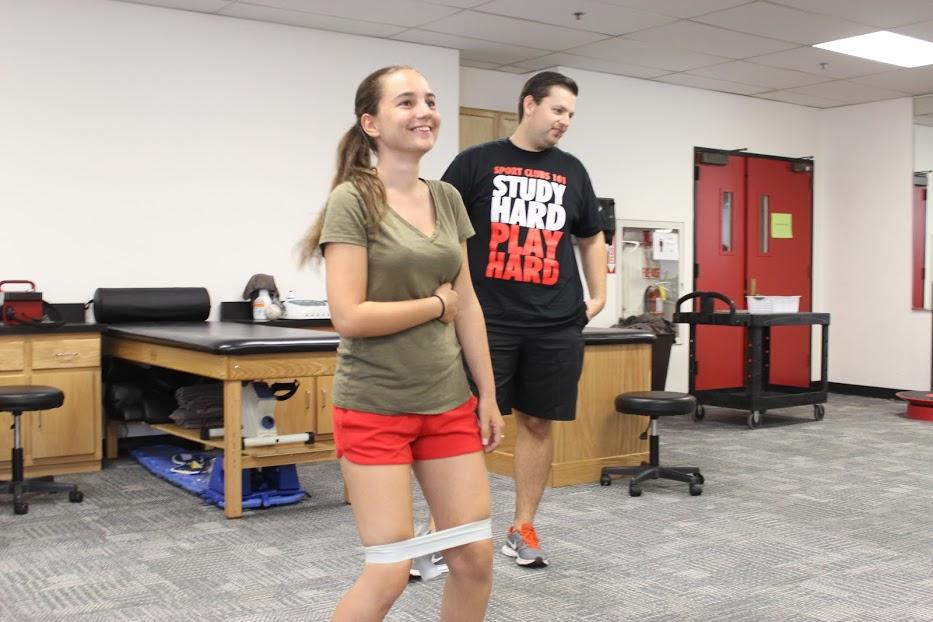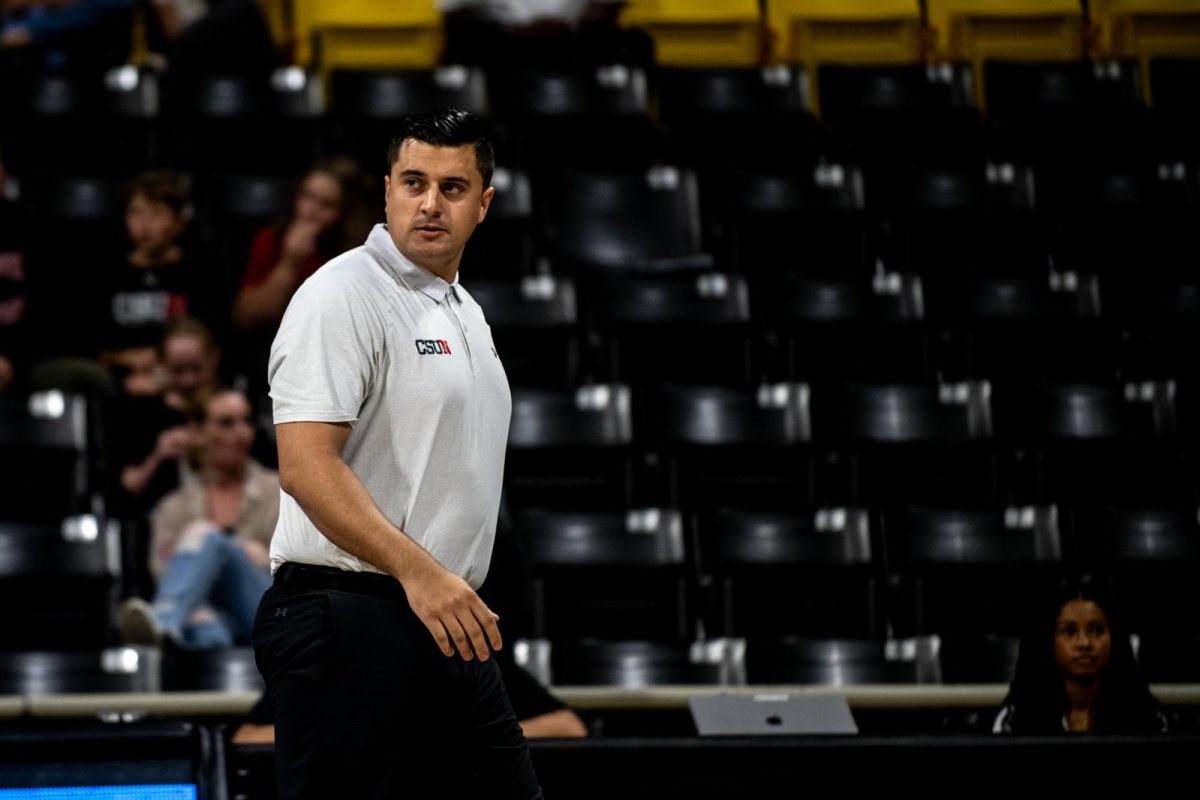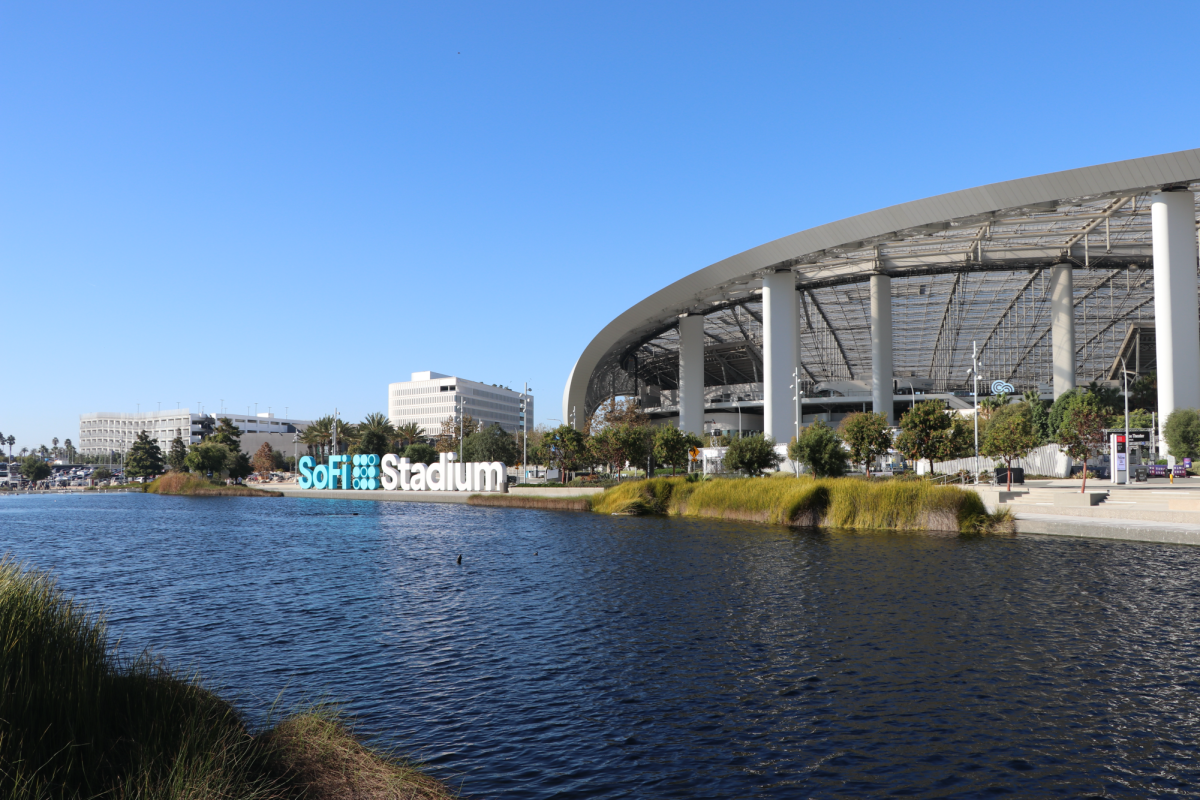For the over 1,100 CSUN Sport Clubs participants, the program’s athletic training facility and initiatives are vital parts of the injury prevention, management and rehabilitation required to keep them at their best for their respective clubs.
Wyatt Blue has been at CSUN for two years and is the Head Athletic Trainer for AS Sport Clubs. Both he and his predecessor, Brittany Bingham, who established the program in 2011, had big expectations for what they wanted the program to be. They utilized their experiences from other programs to structure the model at CSUN.
“Our goal is to have the same capacity and same level of care and services available as a Division I NCAA program,” Blue said. “We’d been around several other universities and that high standard of care they provide [to NCAA athletes]. That’s not something sport club athletes typically get.”
Blue said that most schools’ programs have part-time staff or athletic trainers that only go to games.
“We have a fully functioning clinic with two professional staff that are dedicated just for the sport club athletes. It’s thorough and good quality care that makes a big difference,” he continued.
But the NCAA model isn’t the only aspect unique to sport clubs here.
“A lot of our teams compete on similar levels as NCAA athletes and that level of competition is what has driven us to need this high level of care and services. They [the participants] don’t care that they’re a sport club athlete,” said Blue. “All they know is ‘I’m an athlete, and I’m competitive, and I want to be the best that I can be’ and our goal is to help facilitate that and help them reach their potential.”
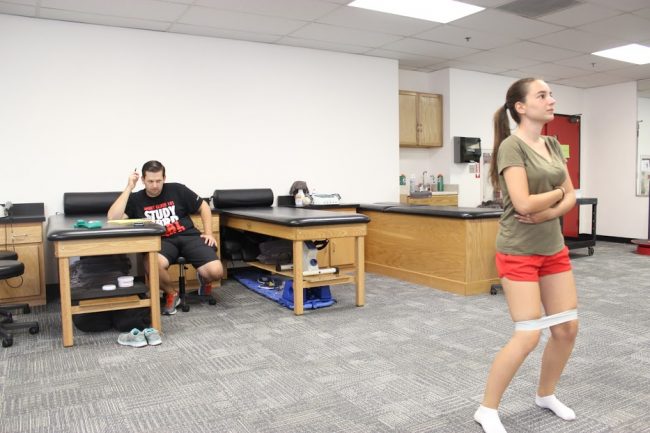
Three separate training sessions are conducted at the start of each semester, one each for administrative, front desk staff; students who are Athletic Training majors and weight room interns.
“All our interns are either students, grad students, or former students who may be trying to work their way into the workforce. We have one grad student working for us right now, two alumni, and the rest are Kinesiology students,” Blue said.
One of the main aspects of the facility is the weight room and it offers all an athlete needs to prepare for his or her sport club.
“We do a lot of strength and conditioning training, corrective exercise, and movement pattern training. For some of our higher risk sports and for teams we see more regularly, we’ll schedule team training times during the week and shut down the gym for them,” Blue said.
He says this group setting allows the teams to work out at a higher intensity and also fosters an atmosphere of team building. Aside from these hour to hour and half blocks of time, they offer open gym times for individual athletes to come in and train.
Blue spends a good portion of his days working with the weight room interns, who get their classwork done in their academic program and get hands on work in the gym.
“This is where they put their classroom knowledge into practice. They get binders with 30-40 pages worth of resources for warm-ups and different techniques like movement screening, corrective exercise, agility training, strength training—everything they’d need to be an entry level sport performance coach,” Blue said.
Opposite the gym, the clinic side functions very much like a physical therapy clinic and is where all rehabilitation procedures are conducted. They offer orthopedic evaluations and provide access to chiropractor services in conjunction with the Student Health Center.
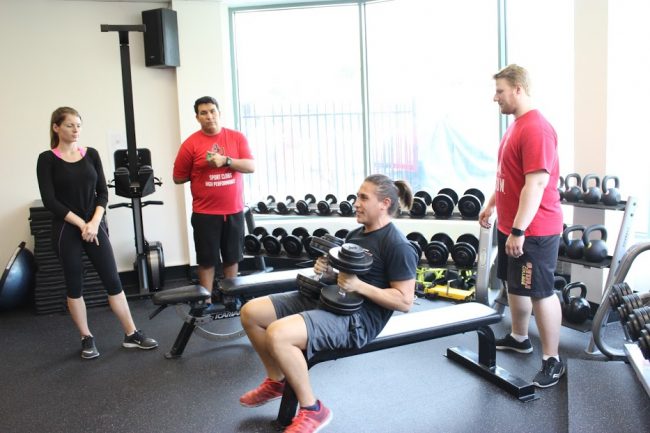
Aleks Trifonova, a member of the Ballroom Dance Club, initially began receiving treatment for patellar tendinitis and now gets treatment twice a week for shoulder and hip injuries sustained participating with her club.
“The program has been amazing. The trainers are great and attentive and highly knowledgeable and passionate about athlete care and rehabilitation,” said Trifonova. “The office staff are helpful, and kind and always willing to help with a smile on their faces. The atmosphere is quiet and peaceful and everyone in the program is highly focused on athlete diagnosis and recovery.”
Adjacent to the clinic is where the gym and offices are located, complete with a physician’s exam room.
“We have a clinic during the semester every Thursday so the doctor can come in and examine our athletes with injuries—both on-going, long term issues, as well as anything new that happens during games over the weekend,” Blue said. “We also have designated time blocks on the Student Health Center schedule. We have multiple options for them.”
Colin Lewis, a U.S. Marine Corps veteran, is an Athletic Training student intern, and the AS Athletic Training Program is a primary resource where students in the athletic training education program can satisfy requirements for their clinical hours.
“I get patient experience in the clinic and we’re overseen by the head athletic trainer,” Lewis said.
During the week the facility is teeming with sport club participants who are both getting in workouts and receiving treatments for sport-related injuries.
“The care they receive is two-fold. One, they get medical care and establish rapport with us, and two, they’re all college-age and doing everything under the sun so we also teach them how to take care of themselves,” Lewis said.
With all the hands-on care the athletes get, Lewis says that their time spent on the clinic side is about fifty-fifty between rehabbing and reinforcing preventative measures to keep a similar injury from happening again.
Blue says kinesiology students often fit the program’s needs best, but all jobs and paid positions are posted on the AS Jobs website, and internship opportunities are listed on the kinesiology webpage.
